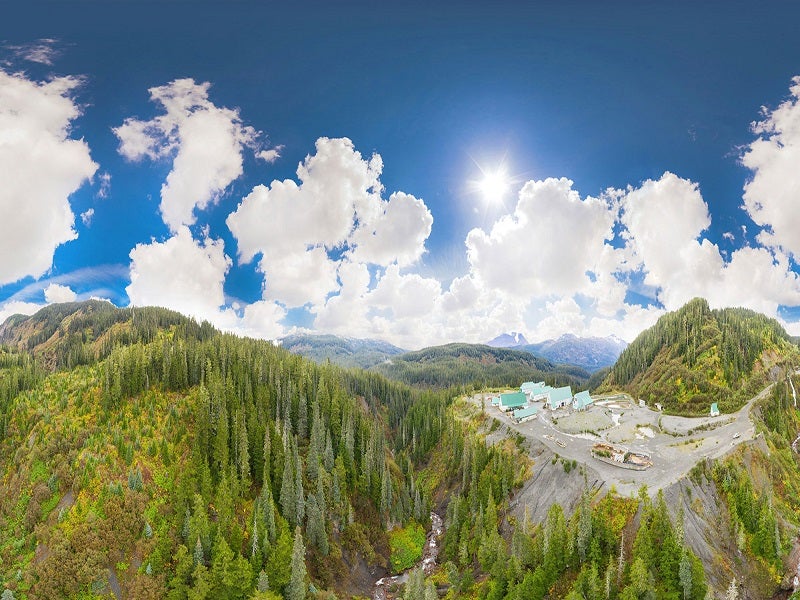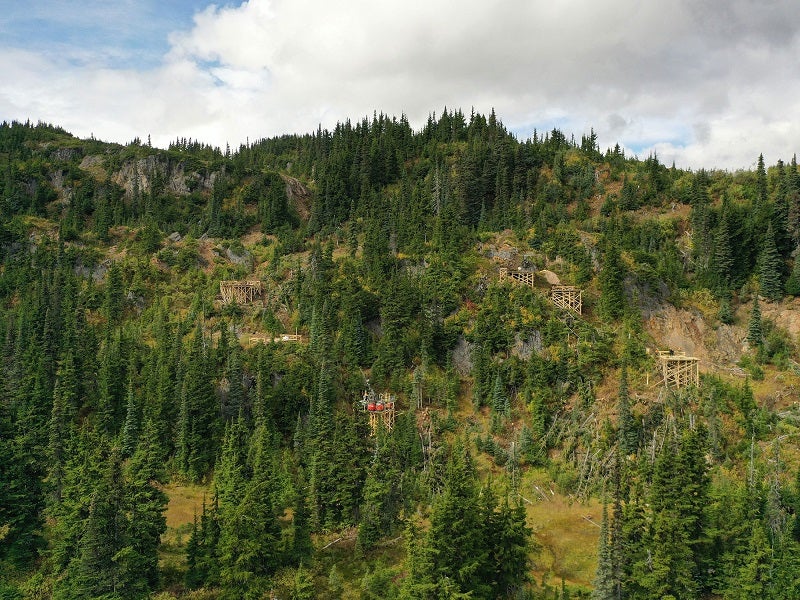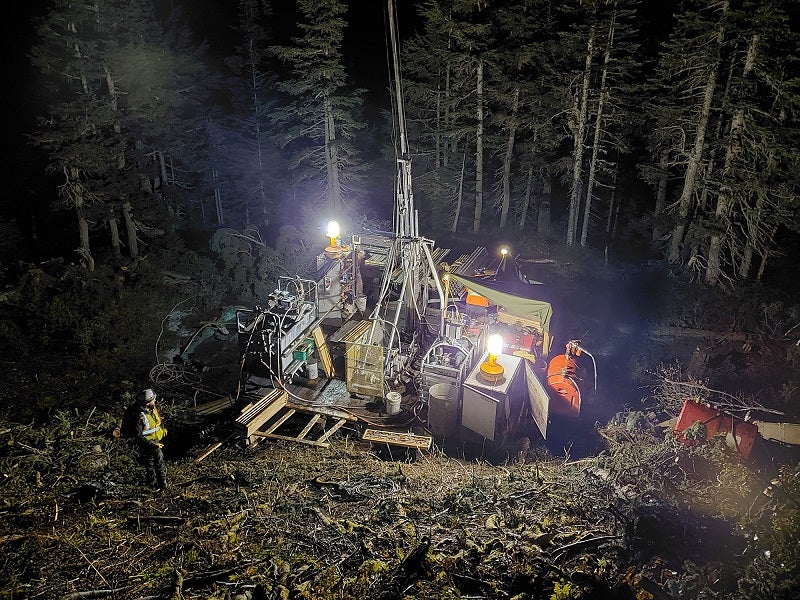The Eskay Creek gold-silver project in British Columbia, Canada, involves the restart of operations at the historical underground Eskay Creek mine.
The old Eskay Creek mine, which was operational from 1994 to 2008, was one of the highest-grade gold mines in the world.
Skeena Resources, which acquired the Eskay Creek gold-silver project from Barrick Gold in October 2020, competed a pre-feasibility study in July 2021, followed by a feasibility study a year later in September, to restart the mining as an open-pit gold-silver operation.
The feasibility study predicted 2.4 million ounces (moz) of gold and 66.7moz of silver production over a mine life of nine years, with an estimated initial capital investment of C$592m ($446.2m).
Location and Geology
The Eskay Creek project is located 83km north-west of Stewart, in Tahltan Territory in the Golden Triangle region of British Columbia. The project encompasses a total area of approximately 5,800 hectares (ha), including 49 mineral claims over 3,968ha and eight mineral leases over 1,830ha.
Situated near the northern margin of the Eskay Anticline, the Eskay Creek deposit is underlain by volcanic and sedimentary rocks of the lower to middle Jurassic Hazelton group. The stratigraphy of the property consists of an upright succession of andesite, marine sediments, intermediate to felsic volcaniclastic rocks, rhyolite, contact mudstone, and basaltic/andesitic sills and flows.
Mineralisation and Reserves at Eskay Creek
Eskay Creek is an epithermal volcanogenic massive sulphide deposit with high concentrations of gold and silver and an associated suite of antimony, mercury, and arsenic. The mineralised zone spans over an area 1.4km long and 300m wide.
The proven and probable mineral reserves at the mine were estimated at 29.9 million tonnes, grading 2.99g/t gold and 79g/t silver as of June 2022.
Mining Methods
Eskay Creek will be an open-pit gold-silver mine involving conventional drill, blast, haul, and load operations. Two pits, including a 260m-deep North pit and an 80m-deep South pit, are proposed to be developed as part of the project.
The overall strip ratio is planned at 7.5:1. Waste mining will occur on 10m benches with catch benches spaced 20m vertically. The North pit will be mined in three phases, while the South pit, which is significantly smaller in size and has harder rocks compared to the North pit, will be mined in a single phase towards the end of the mine schedule.
The mining fleet will consist of 22m³ hydraulic shovels supported by small loaders in tandem. The haul fleet will comprise conventional 144t rigid body trucks.
Processing
The Eskay Creek processing facility will have an annual throughput of 3 Megatons (Mt) for the first five years of operation, which will increase to 3.7Mt from year six.
The run-of-mine ore will undergo single-stage crushing, grinding and floatation for the first three years of operation. The primary grinding circuit will comprise a semi-autogenous grinding mill in a closed circuit with classifying cyclones.
The processing plant is planned to have a secondary crushing circuit, additional ball mill, additional flotation capacity and a fine-grinding mill in the secondary grinding circuit to process harder and lower grade ore from year six onwards.
The flotation circuit will include roughers, scavengers, fines roughers, cleaners, and fines cleaner flotation units. The rougher concentrate will be sent for regrinding, while the rougher tailings will undergo slimes classification and secondary grinding prior to scavenger flotation.
The final gold-silver concentrate from the cleaner circuits will be thickened, filtered, dried and trucked to a nearby port for shipping to third-party smelters.
Infrastructure
The Eskay Creek project is accessible via an all-year gravel road that connects to Highway 37 (Stewart Cassiar Highway). It is a 54.5km private industrial road operated by Coast Mountain Hydro and Skeena.
The electrical power required for the project will be supplied by BC Hydro via the existing Volcano Creek interconnection point located 17km north-west of the project site.
Potable water and freshwater required for the plant will be sourced from aquifers, with wellfields planned to be constructed to the south-west and south of the processing plant. The bulk of the process water needs will be met through mine dewatering, while additional process water will be recycled from the tailings storage facility.
Contractors Involved
The pre-feasibility and feasibility studies for the project were prepared by Ausenco Engineering Canada, with inputs from SRK Consulting (SRK) and AGP Mining Consultants (AGP).
Ausenco was responsible for the metallurgical test work management, process plant, surface infrastructure and waste rock storage facility design, along with sitewide geotechnical and hydrogeological investigations for the project.
SRK provided the mineral resource estimates, while Environmental Resources Management was engaged to support environmental planning, assessment, licensing, and water management solutions for the project.
AGP provided the open-pit mine plan, production schedule and cost estimates for the project.
BGC Engineering, a Canadian consulting company, was engaged by AGP to conduct a geotechnical investigation of a proposed diversion tunnel to divert flows from the Tom MacKay Creek located around the North pit boundary of the Eskay Creek mine.






